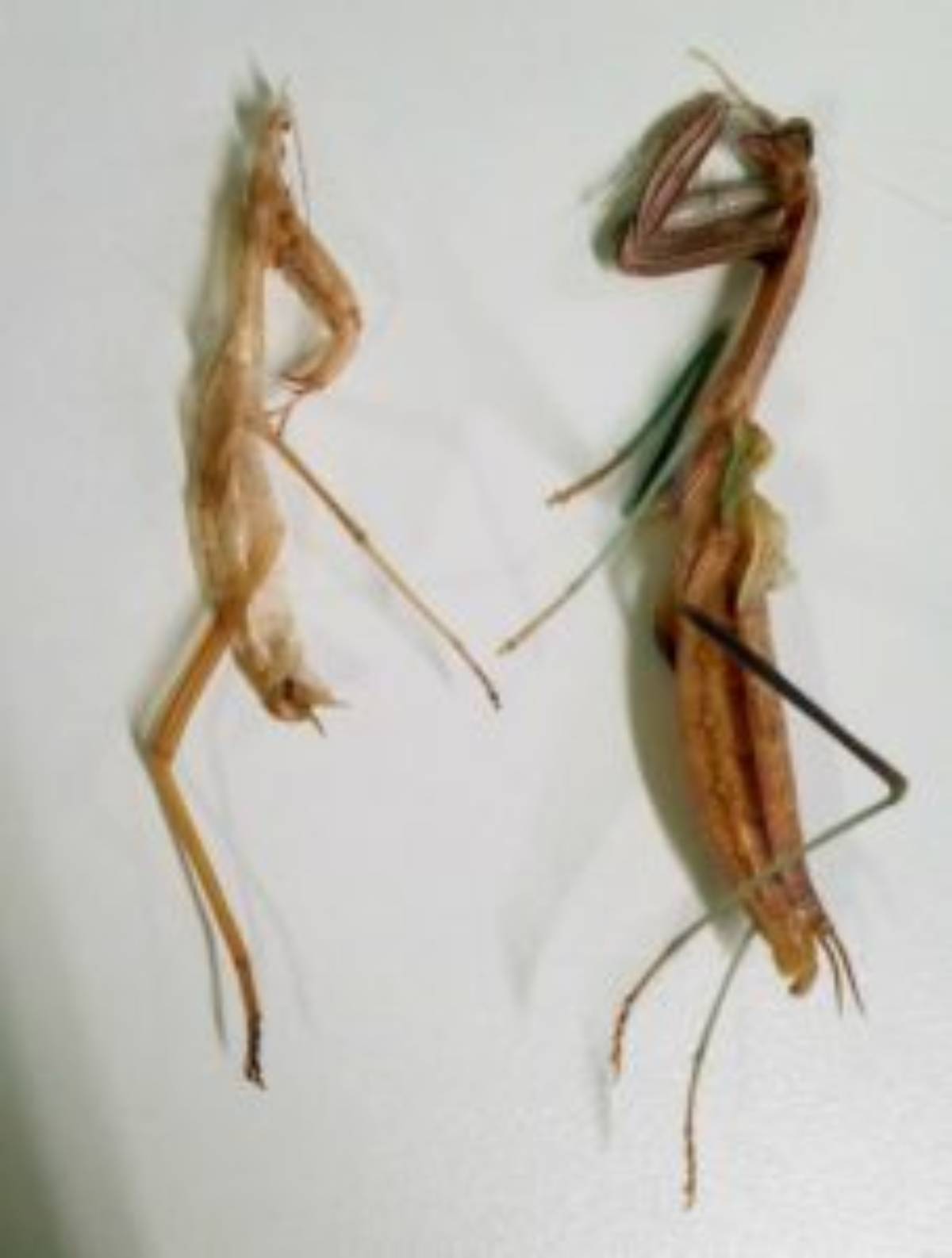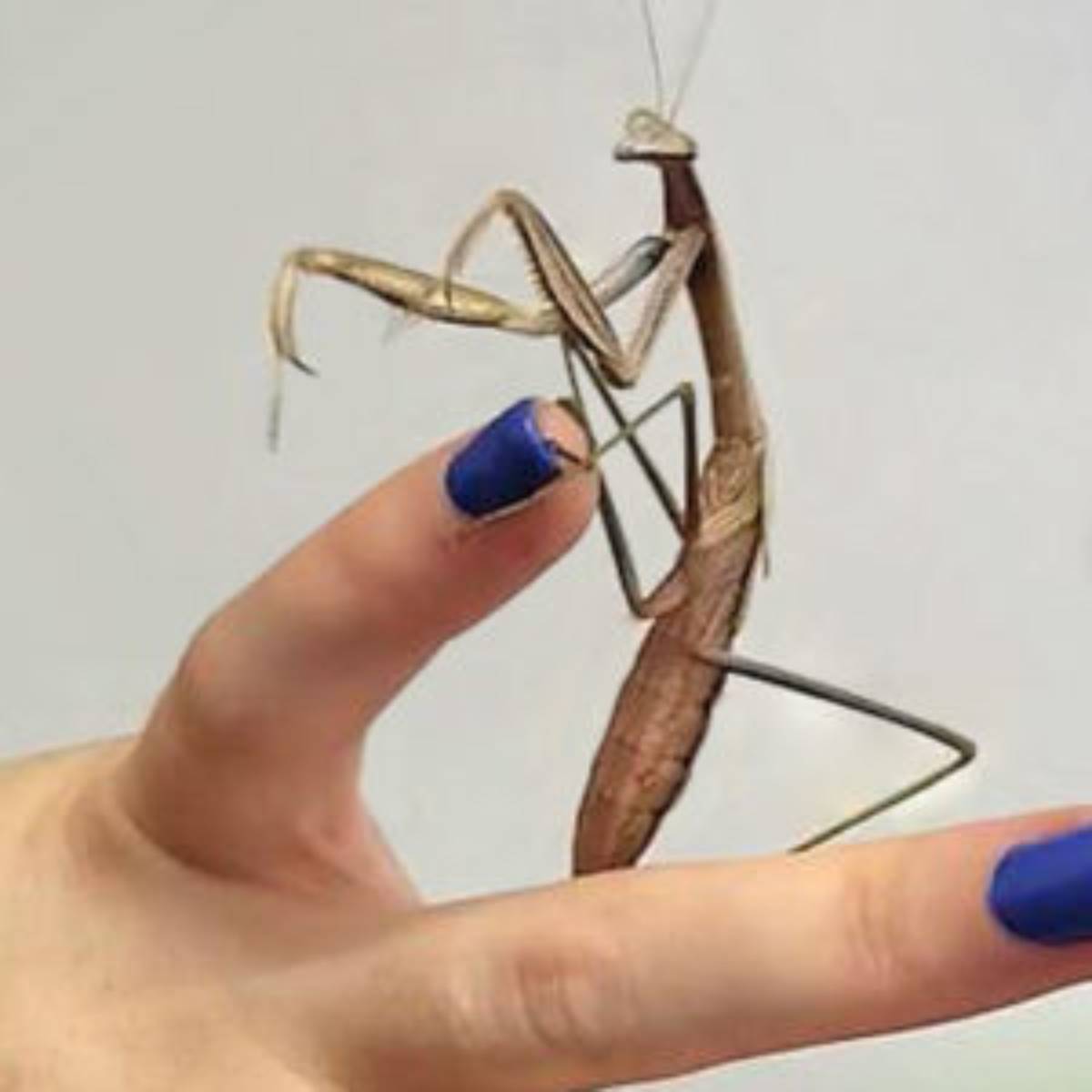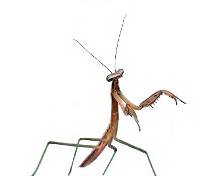Josh's Frogs
Chinese Mantis (Tenodera sinensis) Care Guide
BACKGROUND
Originally introduced from Asia for the purpose of pest control, the Chinese mantis is now one of the most common mantid species found within North America. They also make great pets. In fact, it is the most common and favorable mantid in the pet hobby due to their low maintenance, size, docile nature, and availability.Adults reach up to 4 inches in length and are easily identifiable by the green edge on their wings. Full-grown adults typically have a lifespan between 6 to 9 months in captivity.Mantids can easily be sexed by counting their abdominal segments, with females having six abdominal segments while males having eight.OOTHECA CARE
A Chinese mantis egg case, or ootheca, contains 50-200 or more babies and typically will hatch within 3-6 weeks. An ootheca will hatch earlier if kept warm. Hatching can be delayed by simply storing the egg case in a refrigerator within a non-airtight container for up to two months.Since each ootheca contains dozens to hundreds of baby mantids, please be ready for them when they hatch - mantids make great gifts for others, and even good snacks for many different species of reptiles and amphibians (and each other, if you do not house them individually).We do not recommend releasing the Chinese mantises outdoors, as they are not a native species.
An ootheca will hatch earlier if kept warm. Hatching can be delayed by simply storing the egg case in a refrigerator within a non-airtight container for up to two months.Since each ootheca contains dozens to hundreds of baby mantids, please be ready for them when they hatch - mantids make great gifts for others, and even good snacks for many different species of reptiles and amphibians (and each other, if you do not house them individually).We do not recommend releasing the Chinese mantises outdoors, as they are not a native species.

MOLTING
Nymphs (juvenile mantids) undergo a series of repeated growth in their development known as instars. There are represented as L-numbers (e.g. L2 symbolizes the second instar, after its first molt). Your mantis will shed its skin several times during its lifecycle as it grows larger, and prior to its molt, the mantis will stop eating for a day or two. Do not be alarmed if it refuses its food. During molts, it is vital that you do not disturb them. Unfortunately, issues with molting are the most common cause of death in captivity.
Your mantis will shed its skin several times during its lifecycle as it grows larger, and prior to its molt, the mantis will stop eating for a day or two. Do not be alarmed if it refuses its food. During molts, it is vital that you do not disturb them. Unfortunately, issues with molting are the most common cause of death in captivity.
HOUSING
Nymphs can easily be raised in 32 oz deli cups with fabric vented lids. Provide a stick or twig for the mantis to climb and perch on.This species is highly cannibalistic and should not be housed together after L2.As the mantis grows, it can be transferred to a larger enclosure. Screened cages are a great choice for sub-adults and adults because they provide adequate ventilation. The general rule of thumb is that the enclosure should be at least three times the length of the mantid’s height, and twice the width of the body. The ideal enclosure should have plenty of space and objects such as branches and plants for the mantis to hang upside down during molting.


